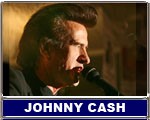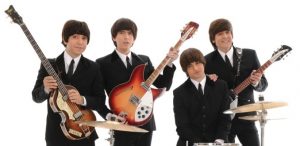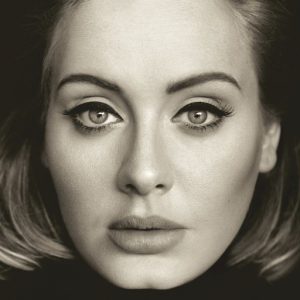They’re popping up all over. And music fans—especially
mid-century-born enthusiasts—couldn’t be happier. They can experience
their teenage music several times a month here in South Florida. The
music of
Billy Joel, the Supremes, Temptations, and
Bruce Springsteen are just a ticket and a short drive away. In fact, in July alone the
Wellington Amphitheatre will feature
The Beach Boys and
Johnny Cash, Jimmy Hendrix and
The Beatles.
Last Sunday I took in a Donna Summer tribute sung by her
sister, Mary Gaines Bernard. Because Mary was Donna’s sibling—and sang
back-up for a good part of her career—Mary’s look and sound was spot-on
to the Disco Queen’s.
Since I was new to the tribute band phenomena, I was struck by
the audience’s raucous response. They were up and dancing and singing
along for the entire concert. Afterward, I overheard some folks talking.
“Yeah, wasn’t this great? There’s a Rod Stewart band playing in a couple of weeks. We’ll come by and pick you up.” Following your favorite old band has become an area pastime.
Tribute bands began to gain popularity in the mid-90s. Some say
it was a response to rap music, and the market’s inability to embrace
the new inner city genre. Tribute bands were a welcomed throw-back.
Others criticize tribute acts because they feel they’re not authentic.
The musicians are likened to posers and wannabes who never made their
own mark. But for many, the music of the 60s, 70s, and 80s had an
integral part of their youth, and the mere sound—even just a few bars of
a song’s introduction—can jolt the listener back to the glory days of
adolescence. It’s a trip to the past, transporting them to more carefree
and footloose times.
Today, like cover bands, dance bands, etc., tribute bands have been accepted as a legitimate genre. Documentaries, TV shows and
multiple articles have been devoted to the subject.
With more than 100 acts playing here in South Florida, audiences
have cultivated detailed expectations from their favorite throw-backs.
From ABBA to ZZTop, the Beatles to Bon Jovi, there are specific requirements that make up a top-notch tribute band.
First and foremost, they must look the part, which includes, hair
length and color, hats, glasses (or none), facial hair or not, costumes
and shoes. Casting is as critical as talent. Imagine Elton John
without platform shoes and funky glasses; or Stevie Nicks without a
black shawl and a fringed scarf flowing from her tambourine, or Elvis
without a collared, bell-bottom suit and ankle boots. The visual
personality must replicate the Real McCoy. Reba McEntire is not Reba without red hair.
Part of that ‘image’ is mannerisms and gestures. Sound-alike
artists study video upon video to learn how the celebrity comes across
on stage. Do they pace, jump, lean, or dance while performing, like Janis Joplin, Michael Jackson or Tina Turner?
Or do they sit calmly on a stool—acoustic guitar in hand—like James
Taylor, Linda Ronstadt and Simon and Garfunkel? Hand gestures and
singing style are key features that a tribute artist works to imitate.
Obviously, the group is expected to play their songs as close to
the recording as possible. Vocal timbre is huge. It wouldn’t be Joe Cocker or Rod Stewart if they didn’t have a gritty voice. Without stacked harmonies, The Beach Boys and Fleetwood Mac would not sound authentic. Garth Brooks imitators better have a twang, and Johnny Cash and Neil Diamond’s vocal range better live in the basement. Song arrangements stay tightly within the reins of their radio or CD likenesses.


Rather than replicate the music exactly, some groups have
exercised creative liberty and added a twist to their show. In 2009, an
all-girl band called Blonde Jovi remixed Bon Jovi’s music (and incidentally, caught a law-suit from the latter and changed their name for a brief life afterward). Beatallica does a Metallica version of Beatles tunes. (They also got in trouble with Sony Music, but won). And the boys in Dread Zeppelin do Led Zeppelin in a reggae style. Many of these copy-cat groups have developed a following of their own.
Tribute bands offer music-lovers the chance to relive that unique
moment a hit was first heard on the radio or in concert. And audiences
are not comprised of just aging rockers who grew up in the 60s, 70s, and
80s. Plenty of today’s young adults can be found moving and grooving
to Elton John, the Doors, James Taylor or Rush.
Younger concert goers can also hear shows that feature existing artists, like Lady Gaga, Michael Buble, and Dave Matthews.
Rather than bring back the past, some tribute acts are simply riding
the wave of current pop successes, and peddling acts such as Adele, One Direction, and Beyonce.
But, whatever your musical taste is, somebody’s playing it at a
venue or amphitheatre near you. Take advantage of the Tribute Band trend
and go hear yesterday’s favorite Top 40 tunes, today.










